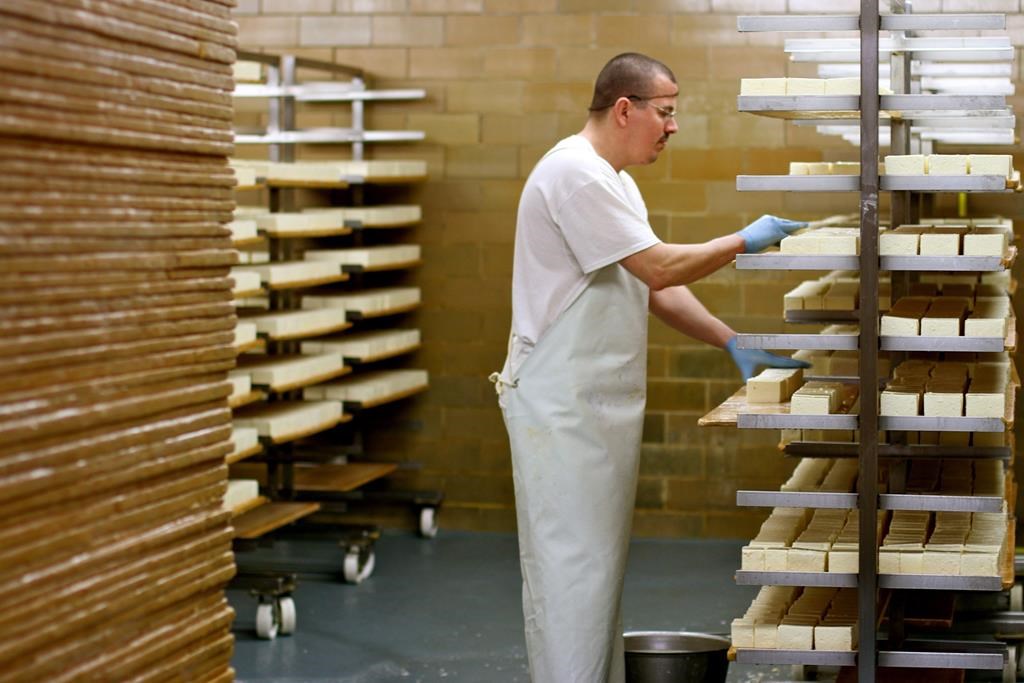MONTREAL – Yeasts identified by researchers at Laval University could one day replace some chemical preservatives found in some foods.
In collaboration with a team from the University of Lille, Quebec scientists have more precisely identified two types of yeast from cheese produced in France and Quebec that appear to be able to inhibit the growth of certain microorganisms, reducing the duration of food safety.
“We realize that, ultimately, these yeasts, which are naturally present, are a bit like the defense system in cheese, in that they will be able to naturally eliminate pathogenic bacteria,” explained one of the leaders of the study, Professor Steve Labrie from the Faculty of Agricultural Sciences. and food sciences at Laval University.
“The idea is to understand how we can enhance this type of microorganism that already has anti-pathogenic activities in products.”
The two yeasts were identified, M. Pulcherrima And t asahi, It is maintained in the collection of the Food Mycology Laboratory of the University of Laval and includes more than 5,000 microbial strains isolated from milk and cheeses mainly from Quebec.
In the laboratory, researchers tested the inhibitory ability of these two yeasts against 16 microscopic fungi and bacteria – especially Clostridium and Listeria strains that can cause poisoning in humans, in addition to harming food preservation and safety.
The first yeast was found to be effective against ten of these strains, and the second against four. Both yeasts were effective against Listeria.
Other tests have shown, in laboratory-produced cheese, that yeasts are able to inhibit microscopic fungi known to be detrimental to food preservation.
“When we look at several types of cheese or several cheese factories, we realize that the plants are very different and each has its own characteristics,” Professor Labrie said. Therefore, not all cheeses contain (these yeasts), but some do, and the idea is to understand how they end up in certain varieties and not in others, and then how they contribute to the elimination of endogenous microorganisms.
He noted that the way plants develop in cheese is still “very unknown.” Even after 20 years of working in microbiology, he occasionally encounters a microorganism — such as yeast or fungi — “and I don't know what it's doing there.”
“Is it nice, is it bad, does it contribute in a positive or negative way? There's still a big black box around who does what, and then how, and what their real contribution to the product is,” Professor Labrie said.
So far, researchers have been able to determine that these molecules are produced in the environment by yeasts, which inhibit the growth of other microorganisms. They are now trying to isolate and characterize antimicrobial molecules produced by yeast.
He explained that these molecules could one day replace chemical preservatives in foods or even be used against pathogenic microorganisms in human or animal health.
“Once we have inhibition against pathogens, we must push (the work) further,” Professor Labrie said. We are really at the initial level in our studies. (But) since it's already present in cheese, we're on a safer path toward using it in food products or in human applications because it's already been there and been consumed for several thousand years.
He points out that even after thousands of years, cheesemaking is more art than science, and there are still many mysteries to be unraveled.
“As scientists, we try to understand the levers that cheesemakers instinctively use,” he said. We still have a lot to learn about the cheesemaker's instinct.
Steve Labrie's team is now evaluating the antimicrobial potential of other yeast strains maintained in the collection of the Food Fungi Laboratory at the University of Laval.
The results of this study were published in the scientific journal Food Bioscience.

“Hardcore beer fanatic. Falls down a lot. Professional coffee fan. Music ninja.”






More Stories
SALES / PHOTO SALES – Nikon D850 “5 Star” Bare Body Photo Body at €2,539.00
Discovering a new turning point under the Antarctic ice sheet! What are the consequences?
Record number for an insect!